Perciformes: Perches
There's not really many descriptive characters, so keep reading!.
Percoidei
There are 78 families in this suborder, making it the largest fish page on my website! Don't be shy, take a look!
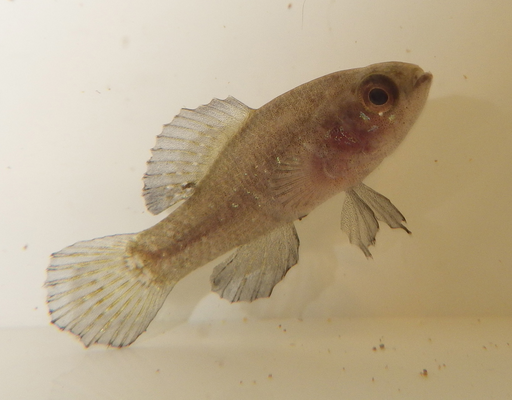
By Andrewbogott (Own work) [CC BY-SA 4.0], via Wikimedia Commons
Elassomatoidei: Pygmy Sunfishes
There is one family, Elassomatidae, with one genus, Elassoma. They were originally thought to be modified centrarchids (sunfishes) that retained more juvenile characteristics, but more detailed analysis shows that they fit better in this location.
Labroidei
There's a bunch of skeletal features that unite this suborder, but I won't bore you with that. Instead, let's talk about protogyny. Most species in Labridae and Scaridae are protogynous, meaning that they can transition from female to male. Often there is a large male with a harem of females. When the male dies, the largest female changes to male and takes over. This makes sense from an evolutionary perspective in some environments, because it helps to maximize the number of offspring produced.
Zoarcoidei
There's nothing really linking these families together to distinguish them from other similar suborders...but we're going to group them together and talk about them together anyways.
Notothenioidei
One would expect something called "icefish" to live where it's cold...one would be correct. Most of these species live around the Antarctic. Nelson metnions that the dorsal fin spines are "usually nonpungent," whatever that means, as well as having floating/absent ribs and 2-3 lateral lines. The highlight is that these fishes often live in water that is below freezing temperature, so they have special proteins in the blood that osmotically lowers the freezing point so they can survive.
Trachinoidei
No idea what unites this group. Our boy Nelson says it's a little up in the air, so we'll just talk about each individual family. Sound good? Good.
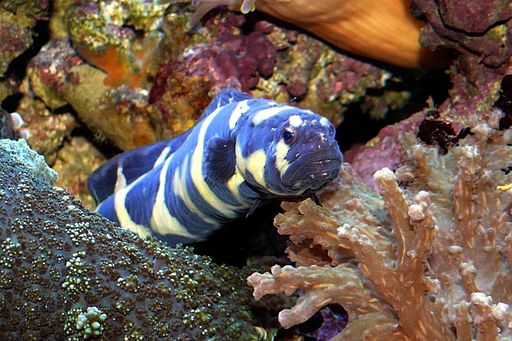
By User:Haplochromis (Self-photographed) [GFDL or CC BY-SA 3.0], via Wikimedia Commons
Pholidichthyoidei: Convict Blennies
There is one family, Pholidichtyidae, containing one genus, Pholidichthys, with two species. You'll find these fishes hanging around the local underwater jail...since they're CONVICT blennies. Actually they get their name from the black n' white stripes on the body. Interestingly, the larvae have adhesive attachment glands between the eyes; for what purpose I know not.
Blennioidei
There are five features which distinguish this suborder, and they involve osteological or morphological minute traits; hence I will not mention them here (reference V.G. Springer 1993 for more info). There are some other characteristics that unite the group, such as cirri (tendril-like appendage) originating from the head.

Photo by Bob Armstrong naturebob.com
Icosteoidei: Ragfishes
There is only one family (Icosteidae), containing the lone ragfish species, Icosteus aenigmaticus. Nelson says they have a "limp" body and a mostly cartilagenous skeleton. Adults lack scales and pelvic fins. The ragfish can be up to 2m in length...that's an extremely large, limp fish.
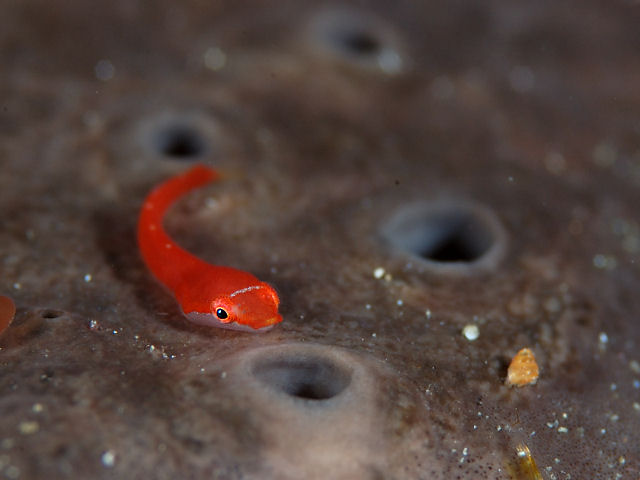
By Izuzuki (http://www.izuzuki.com/) [CC BY-SA 3.0], via Wikimedia Commons
Gobiesocoidei: Clingfishes
There is one family, Gobiesocidae, with 30+ genera. They get their name from the thoracic sucking disc on the underside, which is made from modified pelvic fins. They also have genital papilla behind the anus...thrilling. The genus Alabes is often separated from the rest as it has a highly modified body plan. It lacks dorsal, anal, and pectoral fins, and usually lacks pelvic fins as well. There is also a single opening for both gills on the underside of the head.
Callionymoidei
This suborder has a broad/depressed head and a scaleless body. There are two families, so keep on scrolling.
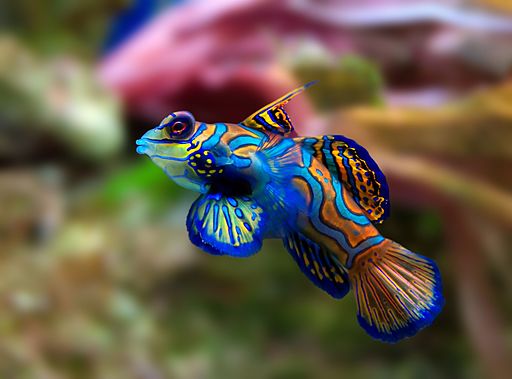
By derivative work: Micha L. Rieser (talk) Luc Viatour [CC BY-SA 2.5-2.0-1.0], via Wikimedia Commons
Callionymidae: Dragonets
These very colorful fishes are found on the seafloor. They may look like gobies, but can be differentiated because the males have much larger dorsal fins and females have protruding lower jaws. They are extremely sexually dimorphic and the males compete with each other for mates. The Mandarinfish (Synchiropus splendidus) is especially colorful, and is one of only two fishes that has blue cellular pigment in "cyanophores," with all other fishes using thin-film interference to produce their blue coloration (the other fish is the related S. picturatus).
Draconettidae: Slope Dragonets
Similar to the dragonets but rarer and less numerous in species, these fishes have a degenerate lateral line and a broad gill opening. They are also sexually dimorphic.
Gobioidei
This large suborder is chock full of tiny fishes that live on the bottom and hence have no need for a gasbladder. That's too bad. Let's meet the families, shall we?
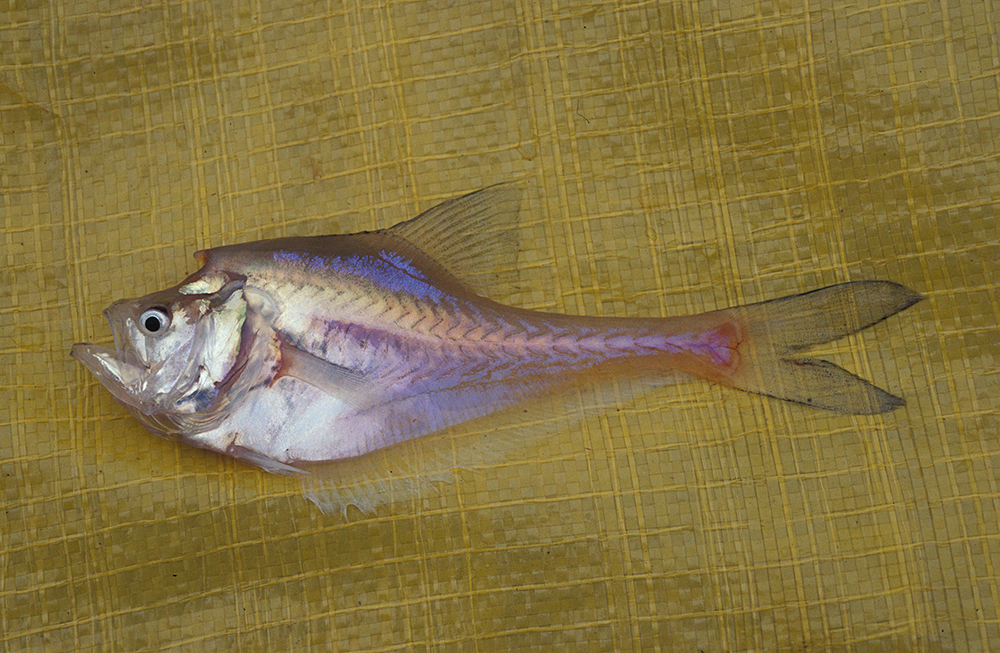
Tim Berra, http://www.asih.org/resources/image_bank/kurtus-gulveri-male
Kurtoidei: Nurseryfishes
Who takes care of the baby fishes while the older fishes are off at school? The nurseryfishes! There is one family, Kurtidae, with one genus, Kurtus, with two species. Males have a hook on their heads which are used to carry the eggs. The gasbladder is enclosed in a bony structure modified from the ribs.
Acanthuroidei
This group has a very flattened, rounded body shape. There's not many other exciting unifying features, but each family has its own quirks.
Scombrolabracoidei: Longfin Escolars
There is one family, Scombrolabracidae, containing one species, Scombrolabrax heterolepis. This fish has a gasbladder with bubble-like growths that fit within vertebral bullae, hollowed out regions within the vertebrae themselves. How weird is that?
Scombroidei
Unlike many other Perciformes, this suborder does not have a protrusible premaxilla. But it's okay, they have lots of other cool aspects to make up for it.
Stromateoidei
Some bony features, but nothing super exciting. Nelson says they have some toothed outgrowths in the gullet, so be careful before you go sticking your fingers down their throat.
Anabantoidei
This suborder has a suprabranchial organ, with the purpose of allowing these fishes to breathe air in addition to water. Air is taken in through the mouth and passed over the organ, with capillaries absorbing the oxygen. This allows these species to live within oxygen-poor waters. Other features include a swimbladder that splits posteriorly (extending into the caudal region) and males that exhibit parental care by building nests of floating bubbles for their eggs.
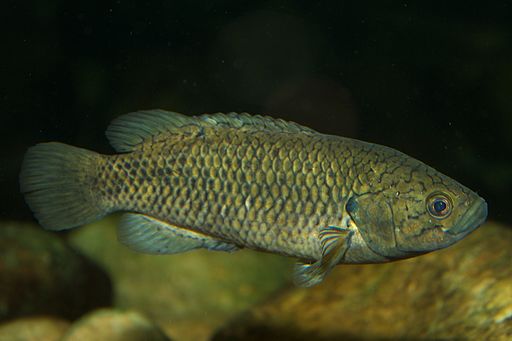
By Brian Gratwicke [CC BY 2.0], via Wikimedia Commons
Anabantidae: Climbing Gouramis
These fishes have fixed conical teeth, which come in handy for their carnivorous diets. They get their name from their ability to walk short distances on land by pulling themselves along by their gill plates. If they can do that, you have no excuse not to exercise.
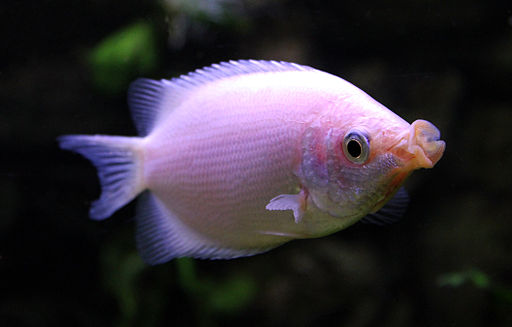
Daniel Ahlqvist (Own work) [CC BY-SA 3.0], via Wikimedia Commons
Helostomatidae: Kissing Gouramies
There is one species, Helostoma temminckii. It lacks all teeth within the mouth but the lips are lined with rough teeth. It gets its name from the terminal, protrusible mouth.
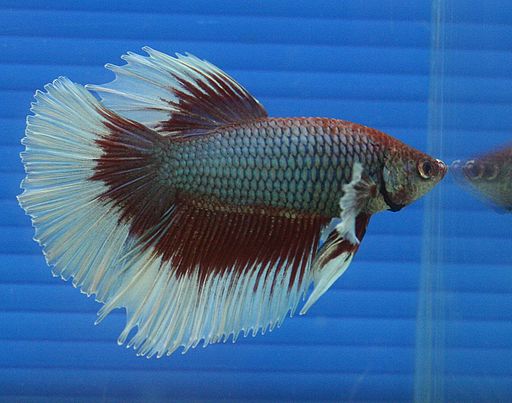
By Lerdsuwa (Own photo [GFDL, CC-BY-SA-3.0 or CC BY-SA 2.5-2.0-1.0], via Wikimedia Commons
Osphronemidae: Gouramies
There are four subfamilies in this family, but the one most familiar to everyone is Macropodinae, which contains the siamese fighting fish (Betta splendens). They are extremely territorial, and you can even get one to posture and threaten by placing a mirror in front of the tank. Only one individual can live in a tank, and often needs to be separated from fishes of other species due to its predilection to attack any fish that has brightly colored fins. Another subfamily, Luciocephalinae, contains Luciocephalus (Pikehead) which has a more elongated body shape than its relatives.
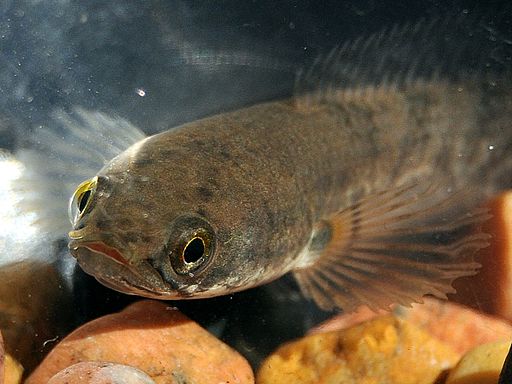
By Wibowo Djatmiko (Wie146) (Own work) [CC BY-SA 3.0 or GFDL], via Wikimedia Commons
Channoidei: Snakeheads
There is one family (Channidae) with two genera. They have elongated bodies with long dorsal and anal fins. Similar to anabantoids, they also have a suprabranchial organ for breathing air. They are a popular food fish in Asia and Africa and have become an invasive species in some areas of the US.
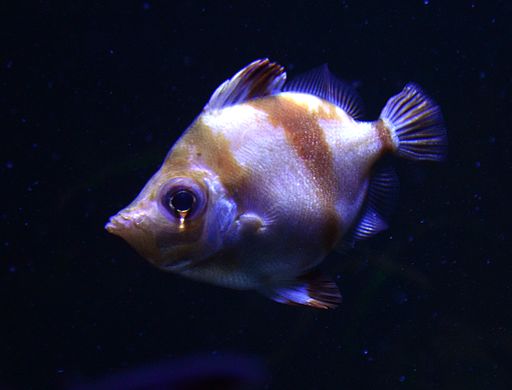
By Vassil (Own work) [CC0], via Wikimedia Commons
Caproidei: Boarfishes
There is only one family (Caproidae) with two genera. These fishes have a deep to rhomboid body shape. They look similar to the zeiforms and have been grouped with them in the past.